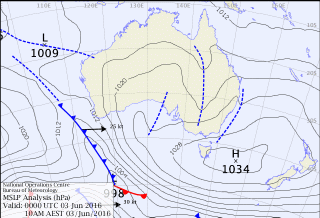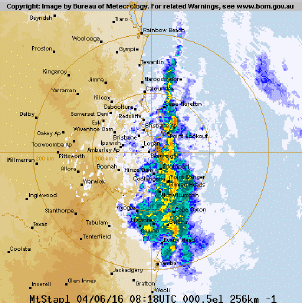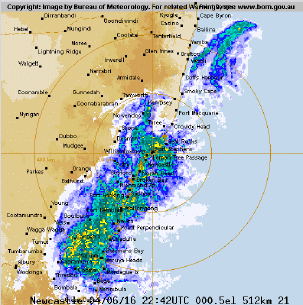East Coast Low Pressure Trough brings extreme weather




The East Coast Low moved south west along the coast between June 3-5 2016 and delivered large rainfalls over the coastal regions. Images from www.bom.gov.au rain radar.
Extreme waves

The Waverider buoy off Stradbroke Island Queensland, in water 70 m deep recorded maximum wave heights of ten metres and significant wave height (Hs) of five metres.
Peak energy wave period increased from six seconds to around 11 seconds over an 18 hour period.

The Waverider buoy at Main Beach in the Gold Coast recorded maximum wave heights of nine metres and significant wave height (Hs) of five metres.
Peak energy wave period increased from six seconds to around 11 seconds over an 18 hour period.

The Waverider buoy at Tweed Heads in NSW recorded maximum wave heights of 15 metres and significant wave heights (Hs) of five metres.
Peak energy wave period increased from six seconds to around 11 seconds over an 18 hour period.
This buoy may have been in breaking waves.
Extreme tide levels

The Storm Tide gauge on the new Shorncliffe Pier in Moreton Bay (QLD) recorded tide levels up to 0.7 metres above normal tide and 0.25 metres above the Highest Astronomical Tide level.

The Storm Tide gauge at Golden Beach in Moreton Bay (QLD) recorded tide levels up to 0.4 metres above normal tide and 0.26 metres above the Highest Astronomical Tide level.

The Ocean Tide gauge within the Tweed River entrance in NSW recorded tide levels up to 0.47 metres above normal tide and 0.44 metres above the Highest Astronomical Tide level (1.9m).
Image from Manly Hydraulics Laboratory, © Copyright NSW Department of Services, Technology & Administration for and on behalf of the State of NSW.

